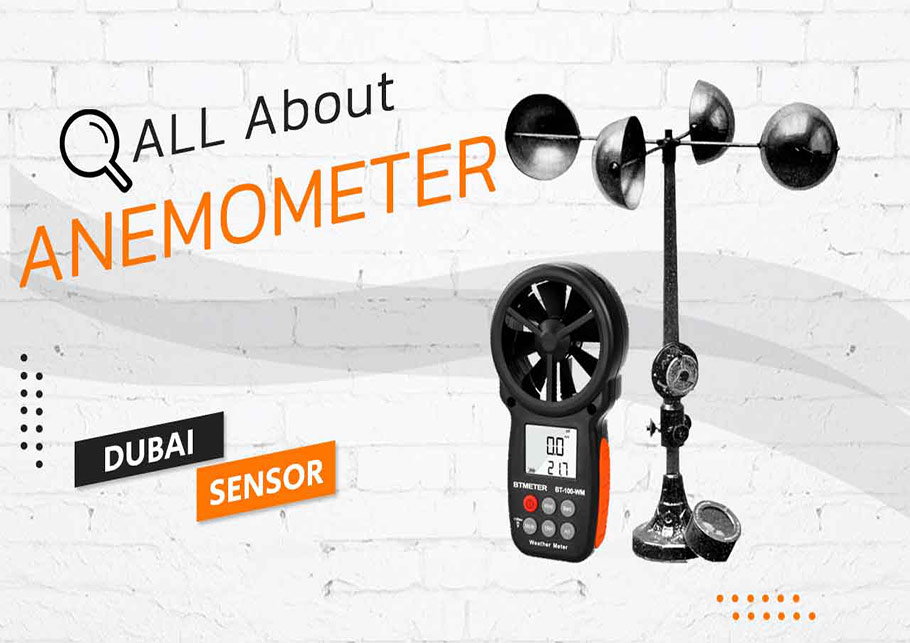Comprehending Various Types of Anemometers for Different Applications
Comprehending Various Types of Anemometers for Different Applications
Blog Article
All You Required to Learn About Anemometers: Just How They Function, Why They Issue, and Where to Use Them
Anemometers, though commonly overlooked in the realm of clinical tools, play an essential function in various areas, providing important understandings into wind rate and air movement patterns. As we dig right into the intricacies of anemometer innovation, we will certainly discover the internal operations of these devices, their importance, and the vital considerations when selecting the best anemometer for certain applications.

Anemometer Essentials
An essential tool made use of to gauge wind rate and instructions, the anemometer plays a vital function in weather forecasting and numerous markets. An anemometer normally includes 3 or 4 mugs that rotate in the wind, a vane that points into the wind, and sensing units to track the turnings or motions. By computing the rotations or activities over a specific amount of time, the anemometer can figure out wind speed. The vane assists establish wind direction by pointing right into the wind, supplying useful data for climate projecting, air travel, maritime procedures, ecological monitoring, and wind power applications.
There are numerous sorts of anemometers offered, consisting of cup anemometers, vane anemometers, hot-wire anemometers, and sonic anemometers, each with its one-of-a-kind functions and applications. Mug anemometers are commonly made use of for basic wind rate dimensions, while vane anemometers are preferred for directional dimensions. Hot-wire anemometers are suitable for low airspeeds, and sonic anemometers are ideal for high-precision measurements in study and industrial setups. Recognizing the essentials of anemometers is important for accurate wind information collection and evaluation across various sectors.
Principles of Anemometer Procedure
Building on the foundational understanding of anemometer essentials, the concepts of anemometer procedure clarify the auto mechanics behind wind speed and instructions dimensions. Cup anemometers, for instance, have 3 or more cups that capture the wind, creating them to spin faster as the wind rate boosts. Hot-wire anemometers rely on a warmed cable that cools down as wind passes over it, with the price of cooling determining the wind rate.
Relevance of Anemometers
The relevance of anemometers in weather forecasting and various sectors can not be overemphasized. Anemometers play an essential duty in determining wind rate and instructions, supplying vital data for climate projecting, environment studies, ecological monitoring, and aeronautics procedures. Meteorologists count on anemometers to collect accurate wind data, assisting them understand climate patterns, predict tornados, and issue prompt cautions to the general public. In industries such as building and construction, agriculture, renewable resource, and maritime operations, anemometers are utilized to maximize processes, make sure safety and security, and increase effectiveness. Wind ranch operators use anemometers to examine wind problems and take full advantage of electricity manufacturing from wind turbines. In the maritime field, anemometers aid ship navigating by giving real-time wind information to captains, assisting them make informed decisions to make certain secure trips. Overall, anemometers are indispensable devices that add considerably to safety my response and security, efficiency, and informed decision-making in meteorology and a large range of sectors.
Applications Throughout Different Industries
Applications of anemometers cover across varied industries, showcasing their versatility and energy beyond meteorology. In the renewable resource industry, anemometers play an important function in evaluating wind conditions for wind ranch placements, ensuring optimal power production. Industries like building and construction and mining use anemometers to check wind speeds, crucial for safety and security protocols, specifically when functioning at heights or in open-pit mines where solid winds can pose hazards. Anemometers are additionally important in the aviation market, assisting pilots in comprehending airspeed and wind direction for risk-free liftoffs and landings. The maritime sector gain from anemometers for ship navigation, aiding seafarers look at here now expect weather modifications and readjust paths accordingly. In agriculture, anemometers help farmers in handling crop splashing by providing real-time data on wind speed to stay clear of drift. Anemometers locate applications in HVAC systems to enhance air flow and boost energy performance in buildings. The diverse use cases of anemometers highlight their relevance throughout various industries, highlighting their crucial role in improving functional security and efficiency (anemometer).

Selecting the Right Anemometer for Your Demands
Picking the ideal anemometer customized to your particular requirements is essential for getting exact wind speed and direction measurements. When choosing an anemometer, think about variables such as the desired application, required measurement array, ecological problems, and wanted attributes. For general functions, a cup anemometer is appropriate for determining wind speed, while a vane anemometer provides wind direction information. Hot-wire anemometers are perfect for low airspeed measurements, and ultrasonic anemometers use high precision and toughness.

Final Thought
Finally, anemometers play a crucial duty in determining wind speed and direction throughout different industries. Recognizing the concepts of anemometer procedure is vital for selecting the appropriate gadget for certain requirements. From weather forecasting to air travel, anemometers are vital devices for ensuring and gathering precise data safety and security in different applications. When choosing the most appropriate device for gauging wind conditions., it is vital to consider the relevance of anemometers in order to read what he said make informed choices.
There are various types of anemometers offered, consisting of cup anemometers, vane anemometers, hot-wire anemometers, and sonic anemometers, each with its special attributes and applications. Cup anemometers are typically made use of for basic wind speed measurements, while vane anemometers are liked for directional dimensions. Hot-wire anemometers are appropriate for low airspeeds, and sonic anemometers are optimal for high-precision dimensions in study and commercial setups.Structure on the fundamental understanding of anemometer basics, the principles of anemometer operation illuminate the mechanics behind wind speed and direction measurements. For general functions, a mug anemometer is ideal for gauging wind rate, while a vane anemometer gives wind instructions data.
Report this page